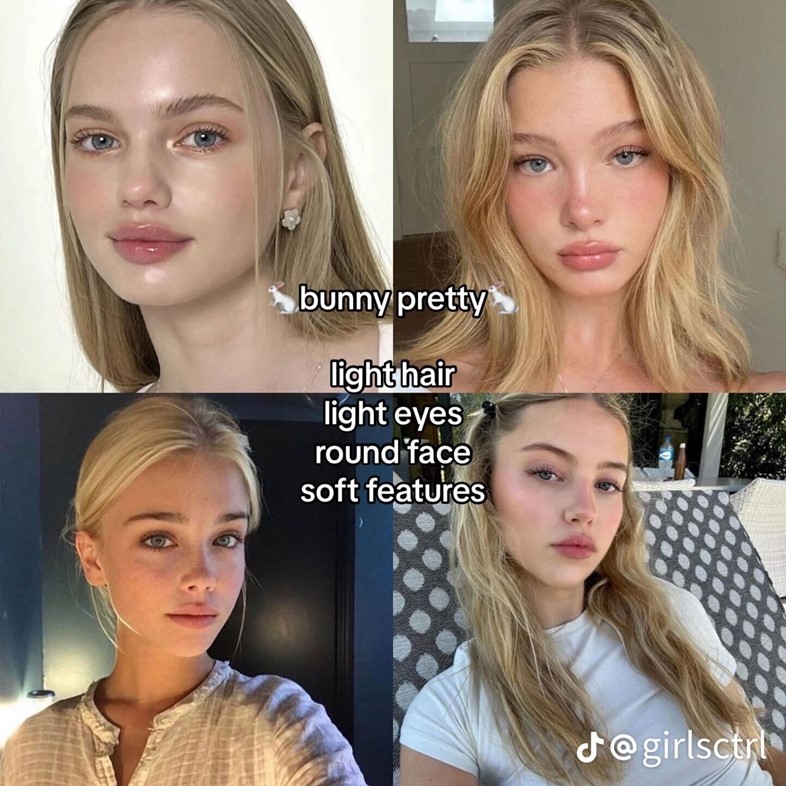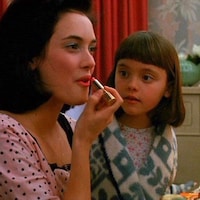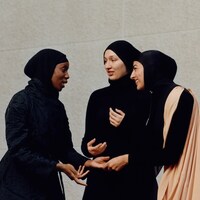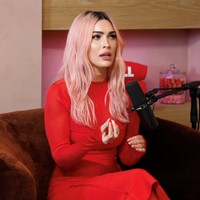From ‘are you cat pretty, bunny pretty, deer pretty or fox pretty?’ to ‘are you boy pretty or girl pretty?’, viral beauty trends offer us the illusion of variety and choice while encouraging algorithmic sameness
It wasn’t long ago that almost every face online looked the same. You know, the Instagram Face with the smooth skin and FaceTuned features. A single, cyborgian look has been the standard for years, dominating social media feeds with its feline eye flick and dissociative pout – the kind that writer Jia Tolentino once described as looking at you “coyly but blankly, as if its owner has taken half a Klonopin and is considering asking you for a private jet to Coachella”. Well, now it’s getting an upgrade, as we enter the era of TikTok domination.
For today’s it-girls, it’s all about creating their own unrealistic beauty standards for them to conform to. “Are you cat pretty, bunny pretty, deer pretty or fox pretty?” goes the viral meme – there’s even a filter that lets you try on each look. Another asks, “Are you high or low visual weight?” None of these categories are necessarily more prized than the others. To see yourself as ‘bunny pretty’ or ‘high visual weight’ isn’t a marker of superiority over your fellow females, but rather the starting point for the steps you must undertake to engineer your own self-improvement journey.
Scrolling through social media today, you’ll find countless clips suggesting glow-up tips catered to your facial anatomy. Whether it’s understanding the difference between “doe eyes” and “siren eyes”, or using the canthal tilt filter to figure out the perfect angle for your eyeliner, these micro-trends tell women, ‘Be The Best Version of Yourself’. There’s also the viral ‘are you boy pretty or girl pretty?’ debate, which breaks women down into yet more categories to differentiate between the physical traits that women supposedly find attractive versus what men supposedly find attractive.
This is where things start to get a bit murky. Whether it’s ‘what pretty are you’ or your visual weight, these examples almost always feature women who kind of all look the same: basically, conventionally hot girls with Instagram Face whose only differences are hair colour. Some people have argued that there’s an interesting, problematic distinction between the girls who are coded as ‘boy pretty’ – generally Asian and Latina – and those who are ‘girl pretty’ – white girls. But as one comment points out, “Maybe they’re just pretty”.
By now, we know that Gen Z loves to rebrand old trends: Clean Girl as That Girl as VSCO girl. Regurgitating the same trend cycles under different names gives the illusion of change, making it appear fresh and exciting while still maintaining the status quo. This happens with micro-trends, for example renaming a pale blue manicure to blueberry milk nails, and now we are seeing it seep into categories of facial features. Saying you’re ‘deer pretty’ or ‘boy pretty’ is a way of faking diversity while still upholding the same old hierarchical beauty standards that paved the way for Instagram Face in the first place. Suggesting glow-up tips based on your particular beauty type reinforces the idea that pretty privilege – AKA the idea that the hotter you are, the better others treat you – is the ultimate social cachet. The only difference now is that the experience is broken down into deceptively cute and silly little games, hidden beneath layers of memetic irony.
now wait a minute pic.twitter.com/lvdYYlr77z
— Morrissey Hate Club (@piscespari) December 4, 2023
If Instagram Face is the Kardashian simulacra at the top of your feed, TikTok Face is the synthetic beauty on your FYP. It’s the same but different. TikTok Face’s appearance is uncanny and easily digested into algorithmic filter bubbles ready for digital consumption. The same angelic baddie listening to subliminals (girl-coded manifestation videos) before bedtime is reconfiguring her make-up routine to best match her visual weight. She uses viral AI-powered face filters to enhance her appearance, neatly packaging her facial features like a text-to-image prompt, breaking her beauty down into stats to be fed back to the machine. It mirrors the way AI is creating hyper-personalised ad for individual users. The singular it-girl splits into a girlswarm of it-girls each tailored to appeal to your hyper-personal consumer desires.
Sold to us as something that’s emancipatory, the idea of pretty privilege nevertheless relies on age-old beauty standards that are, ultimately, often geared towards attracting men. The desire to stay ahead of the pack feels so sigma female-coded, it’s really not that different from the millennial #girlboss, whose pink-hued online presence so heavily relies on being the Main Character on feed. “I have to be the hottest person at the grocery store.” A meme depicting an ultra-cute strawberry girl is juxtaposed next to the famous quote by John Berger that reads: “Men look at women. Women watch themselves being looked at. This determines not only most relations between men and women but also the relation of women to themselves.” What this suggests is that woman is a living currency – the capitalist realism we subject ourselves to, where every attempt to break the cycle is repackaged into yet another commodity, feels inescapable. More than simply ‘the male gaze’, being a girl online is inextricable from the conditions of late-capitalism – but as recent looksmaxxing trends point to, it’s not just limited to women.
— ✧ (@northstardoll) January 15, 2024
There is of course a level of pragmatism to the breaking down of our body parts. Things that dictate your social outcome such as dating apps and social media reward those who the machine sees as desirable. Rearranging our faces by way of TikTok’s algorithm increases our visibility, bumping us to the top of the feed and maxxing-out our market value. It’s the same logic as “-core” or “-girl” trends that incentivise sameness on the feed. As Caitlyn Clark writes for Dazed Beauty, “TikTok trend cycles are attempting to remain on the cutting edge of uniqueness, while flattening all forms of individuality”.
If the internet has taught us anything, it’s that beauty is hackable and can be achieved through the endless modding of our facial features through make-up, filters, photo editing and tweakments – all things that can be bought and paid for, of course. While this most certainly plays into the standardisation of our faces, hence terms like ‘iPhone Face’, there’s also appears to be a heightened awareness about the role the algorithm plays in shaping our behaviour both online and offline – for example, the recent #uncannyvalleymakeup trend, where users literally transform themselves into robotic dolls. There’s nothing wrong with participating in online trends, but maybe the question we should really be asking is, who’s this actually for?




